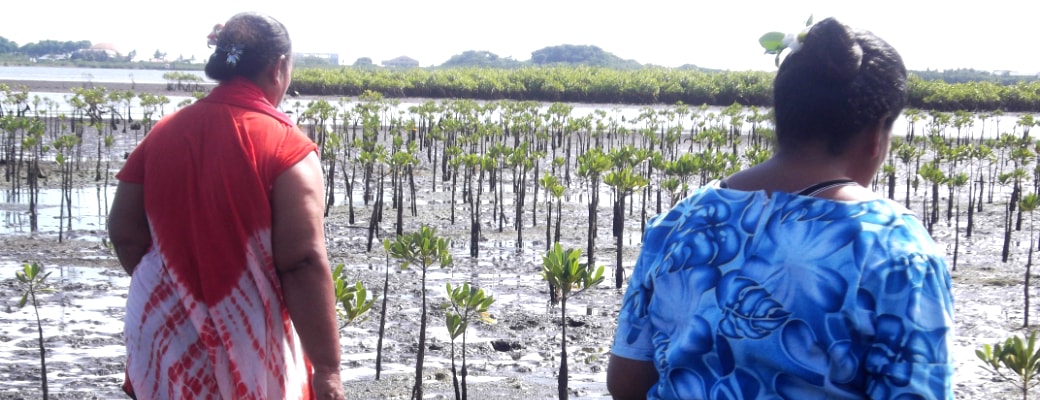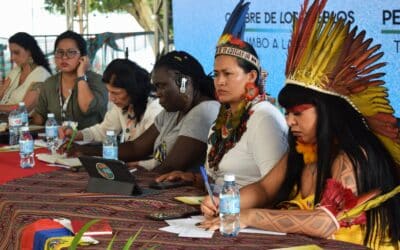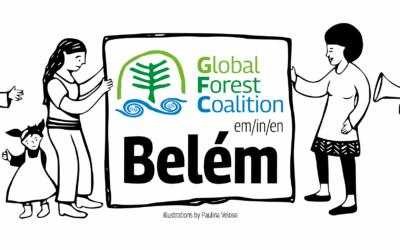The aim of the Community Conservation Resilience Initiative (CCRI) is to contribute to the implementation of the Convention on Biological Diversity’s 2011-2020 Strategic Plan and Aichi Targets, by providing policy advice on effective and appropriate forms of support for community conservation.
The global report of the Community Conservation Resilience Initiative, June 2018, is now available, including the summaries for each of the countries covered.
Report of the Community Conservation Resilience Initiative
June 2018
Key Findings
All the communities included in this report are, in one way or another, highly dependent on the biodiversity that they coexist with in their territories, and almost all are actively engaged in managing their natural resources in keeping with their culture and traditions. Numerous communities are also regenerating damaged habitats.
However, all the communities are struggling, to different degrees, with a wide range of internal and external threats that impact the resilience of their conservation practices and their capacity to protect their environment. The Community Conservation Resilience Initiative is designed to explore the many ways in which communities protect biodiversity, and how their vital work can be supported.
Community Conservation Practices
Some of the communities are located in intensely biodiverse ecosystems. For example, the Bambuti Babuluko Pygmies’ territory in the Democratic Republic of the Congo (DRC) is home to flagship species such as the mountain gorillas of the Kahuzi Biega National Park and in the Ikobo-Pinga forests, and Shabdan villagers in Kyrgyzstan share their home with snow leopards, ibex and golden eagles. But biodiversity is endangered and communities can see the changes themselves. In Kenya, for example, communities observe that in the past the Nyekweri Kimintet Forest and Marsabit were abundant with flora and fauna but they can see the biodiversity is now declining. In Ghana, the Avuto community on the shores of the Avu Lagoon (within the Keta Lagoon Complex Ramsar Site) is aware of its importance for migratory birds and the threatened Sitatunga (Tragelaphus spekii an amphibious antelope species).
Communities participating in the CCRI interact with and use biodiversity in many different ways. For instance, in La Alsacia in Colombia, the Afro-descendant community has a deep knowledge of their natural heritage, with their own names and classification systems for fauna and flora, and internal regulations to monitor harmful activities. In Mengkawago, in Malaysia, the forest-dependent Sungai Rumanau community still maintains its knowledge of harvesting wild honey from bees that establish their hives in a particular tree species (Menggaris sp). By harvesting honey sustainably, the community protects the surrounding forest
area, providing broader environmental benefits. In Sri Lanka, Kitul trees (Caryota urens) provide sweet flower sap, timber and edible flour, and traditional snakebite healers use freshly harvested medicinal plants to cure snake bites (while respecting snakes as top predators and indicators of resilient ecosystems).
In Georgia, Tajikistan and Kyrgyzstan communities are heavily dependent on collecting non-timber forest resources, especially wild fruits, mushrooms and nuts. For example, in Sarikhosor and Dashtijum villages,
in Tajikistan, some 20 local varieties of mulberry provide berries as food for humans and domestic animals, leaves for producing domestic silk, and wood for carving utensils and musical instruments. In Obigarm in Tajikistan the community preserves local healing and thermal waters, keeping local water sources clean by prohibiting cattle from drinking from or trampling them, and protecting them from erosion by planting trees. The pastoralist Rendille people of Logologo in Kenya have planned migration routes for their livestock, which allow for the regeneration of vegetation. Communities’ cultures and traditions are often closely aligned with safeguarding critical ecosystems and endemic species, and many restrict what can be hunted, gathered or grown, and when, including through the use of taboos and reverence for sacred sites. For example, the Bambuti Babuluko Pygmies in DRC have strict regulations on hunting.
A large mammal may only be killed in exceptional cultural circumstances, when authorised by an elder or ancestor, and hunting for sport or profit is completely prohibited. In Ghana, all three CCRI communities are part of the Ewe ethnic group of Ghana, Togo, Benin and Nigeria, with their own religion of a Supreme God, Mawuga Sogbo-Lisa (Male-Female God), with a related focus on conserving nature through sacred groves and sites, taboos, totems, observations and practices. In Tanzania, community members talk about foodstuffs used, and related benefits and taboos, soil fertility, seed security and land and water use, and how they use various plants and wild animal parts and byproducts to make different medicines. They also talk about how they use a range of indigenous tree species for their livelihoods, bee keeping, health problems, construction and agroforestry.
Similarly in Malaysia, the Murut Tahol of Alutok, Ulu Tomani, a community of forest dependent hunter-gatherers, practice ‘tavol’ in preparation for large and important occasions such as weddings. This prohibits hunting and resource gathering in specific areas of the forest for specific time periods. In Tajikistan, traditional knowledge and practices are tailored to local ecosystems, and include respect for wild animals, and bans on hunting or collecting medicinal plants in cases of their depletion, to allow the local fauna and flora to regenerate.
Managing their water resources is also extremely important for communities. In Ghana all the CCRI communities are engaged in Community Resource Management Areas (CREMAs) based on their traditional conservation practices and have ongoing buffer zone planting projects to protect watersheds and water resources. For instance, the Kpoeta community is restoring the Tsii waterfalls, using GPS (Global Positioning System) to demarcate the site of the falls and boundary and enrichment tree planting. In the community of Terian in Malaysia, the rice-growing peasant community depends on the Terian River, and is working to strengthen its community watershed management system, with a micro-hydro turbine to generate electricity and a gravity-fed water system to provide clean water. In Colombia, the peasant communities have organised themselves into community action boards or collectives, managing community aqueducts and reserves for example. Even in Georgia, where communities are struggling with deprivation and a lack of autonomy and motivation, people continue to preserve nearby forests for cultural and traditional reasons, and villages
protect their water resources.
In addition to traditions and cultural practices, the CCRI reveals an additional range of self-organised community initiatives and other more formal processes and structures that provide good examples of ways that community forest/ecosystem management and regeneration can be facilitated, by communities themselves, and by others.
For example, Nyekweri Kimintet borders the Maasai Mara National Park and is a significant breeding area for elephants from the reserve. In 2005 community members formed the Nyekweri Forest Kimintet Trust to strengthen their ability to conserve their biodiversity. The trust covers 6,000 acres, and helps to secure and ensure the continued protection of land dedicated to the conservation of biodiversity, preventing its conversion to other land uses. In Sg. Eloi in the Pitas district in Malaysia, the community relies on the mangrove forest for protein, fuelwood and medicinal plants, as well as for spiritual purposes. Community members have responded to the clearance of mangroves by a large-scale shrimp-farming project by working to protect, restore and sustainably use their own community mangrove forest on the basis of their customary uses and practices. They are appealing to the company, state government and related agencies to stop the clearing of the mangroves and assist with restoration.
In communities in Kyrgyzstan, villagers have taken the initiative to conserve endangered wild apple tree varieties that are important because of their high levels of resistance to diseases and unfavourable weather conditions. Village school students have transferred trees from a dedicated nursery to village households and planted others in the wild, and created an ethnobotanical garden in the school.
Other community-initiated projects are effectively combating illegal tree felling, poaching and grazing, and one of the communities has arranged for special protection and ecosystem restoration to protect a family of endangered Indian porcupines (Hystrix indica). Other systems that facilitate community conservation are more formally established. Tanzania is a good example of what can be achieved, with all registered villages having a democratically-elected Village Council. This has committees responsible for developing village plans and making decisions on environment, health, community development, education, land, water and community forests. The CCRI communities in Wiri, Sanya, Lawate and Ngasini villages have established tree nurseries to plant indigenous trees around water sources, farms and forests, to counter the impacts of climate change, clean the air, and provide building materials, fuel, medicines and animal fodder. They have returned to traditional organic farming and are keeping bees; and have started consultations with the local government to control water utilisation by large-scale farmers adjacent to rivers.
Nepal, well known for its system of legally-recognised community forests, is another example. Its Community Forest User Groups are critical to the conservation of biodiversity and ecosystems, with 35% of the income from the community forests going to poor forest dependent households to conduct income-generating activities. The Community Forest User Groups have helped to stop forest encroachment, support
biodiversity conservation and ecosystem restoration, and reduce soil erosion, landslides and floods. Local communities have persuaded the government to hand over further parts of the national forests.
External threats
All the communities in the CCRI are struggling with external threats to the resilience of their
community conservation initiatives and their ability to continue to manage, conserve and regenerate natural resources.
One of the commonest and starkest external challenges is that posed by the spread of industrial-scale agriculture and forestry, driving deforestation and toxic contamination. Community
members in Tanzania, for instance, identify agricultural expansion and agrochemicals that kill beneficial organisms as the main threats to forests, land and rivers, along with illegal deforestation and climate change. When agricultural investors and largescale farmers cultivate adjacent land they divert water flows away
from the communities, leaving them with inadequate water for agricultural production and domestic use. Water pumps also spill oil into fresh water sources. Communities in Ghana and Georgia also highlight the visible impact that synthetic pesticides are having on their biodiversity including pollinators.
The spread of monoculture tree plantations, such as oil palm, is particularly devastating and is a driver of violence in Colombia where land grabbing is rife. Territories and communities are vulnerable to institutions, such as Colombia’s National Federation of Coffee Growers, which promise food security while offering
technological packages (that include credit systems, and technical advice to use monocultures and agro-toxics in place of coffee grown with traditional systems) that create dependency and have the opposite impact on the
communities. Kitul tappers in Sri Lanka describe how industrially produced chemical alternatives are undermining the market for the traditional sweet treacle they produce.
The CCRI assessment in India observes that pastoralism as a way of life and livelihoods is in a state of flux all over the world and that life in the Banni Grasslands is similarly disrupted. Development policies have incentivised milk production in a way that undermines pastoral practices, and the increase in the number of animals is threatening to exceed the grasslands’ carrying capacity.
Industrialised fish production poses similar problems. One of the communities in Kyrgyzstan explains how the authorities are converting part of the flood-plain forest into fish farms, causing great damage to natural floodplain ecosystems and the biodiversity of Chon-Kemin Natural Park. In Avuto, in Ghana, the commercial use of monofilament nets threatens sustainable artisanal fishing. Extractive industries are also a key threat, especially in Colombia, DRC, Ghana and Kenya. DRC has sizeable mining and water reserves that are attracting the attention of large mining companies; small-scale mining activities are problematic for the pygmy communities as well. In Ghana, the inhabitants of Avuto fear the opening up of their territory for the exploitation of oil and gas by multinational companies; and the Rendille women in Kenya identified sand mining as a major problem.




